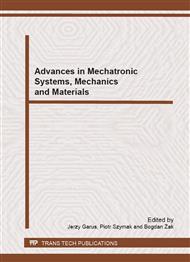p.3
p.13
p.20
p.28
p.43
p.51
p.62
p.74
Concept of Measurements and Acquisition System for Identification Process of a Synchronous Ship Generator
Abstract:
The process of identification of the parameters of a mathematical model of any dynamic real object necessitates performing the relevant number of measurements with the accurate precision of the quantities that characterize the current temporal state of this object (i.e. object’s vector of state). The accurate identification of the parameters of such a model is achievable only with the help of an especially designed system of acquisition and measurement. This article describes the mathematical model of ship’s synchronous generator with the presupposed simplifications, the parameters of this model and the methods of its determining. There is also presented the conception of the system of acquisition and measurement (based on CompactDAQ platform produced by National Instruments), which is indispensable for identifying the parameters of this model.
Info:
Periodical:
Pages:
13-19
Citation:
Online since:
February 2013
Authors:
Price:
Сopyright:
© 2013 Trans Tech Publications Ltd. All Rights Reserved
Share:
Citation:


